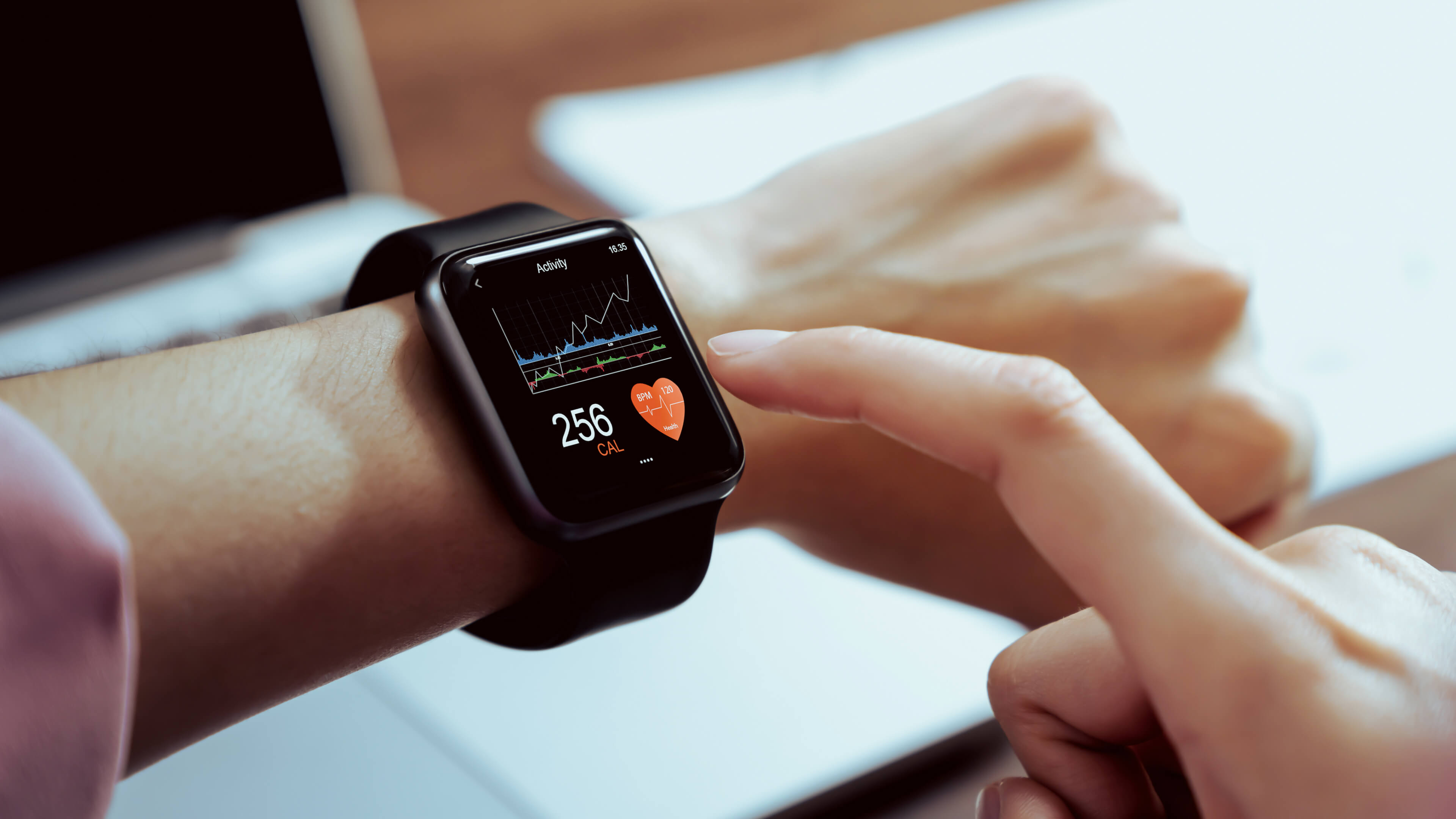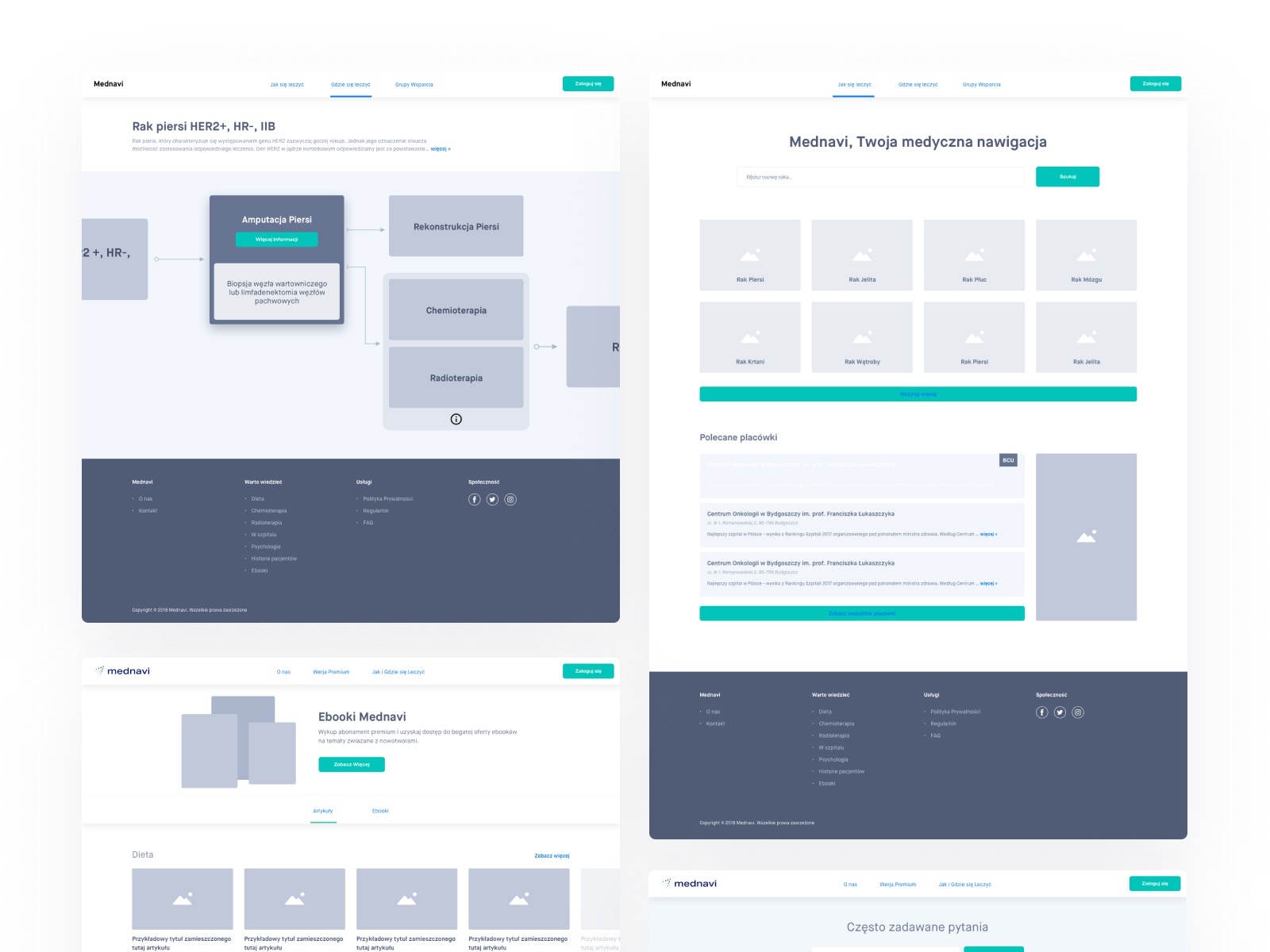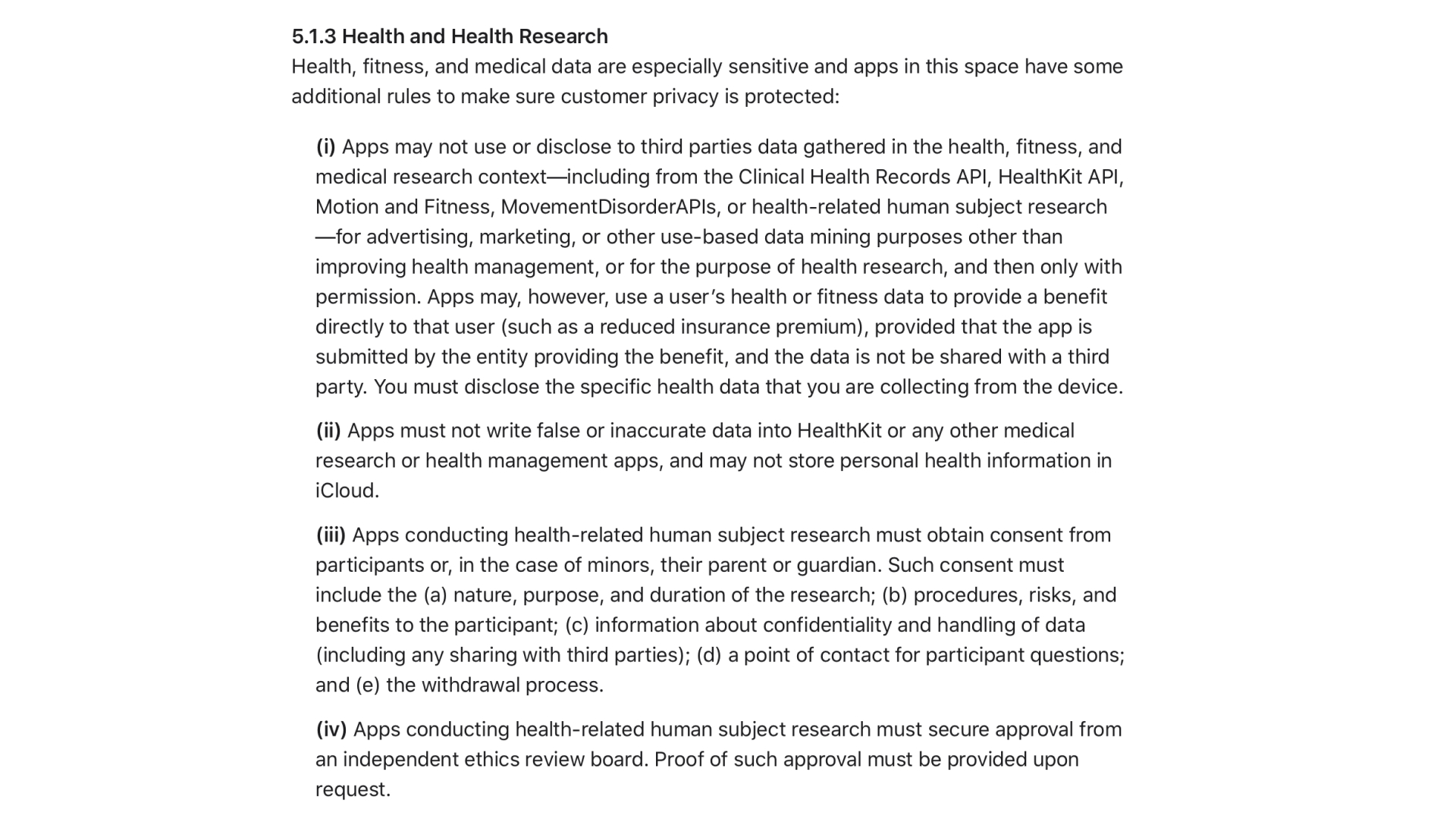16 April 2021 (updated: 4 December 2024)
How to Design & Develop a Healthcare App?
Chapters

The ultimate challenge for modern healthcare is to create scalable apps that solve the right problems while looking sleek.
The healthcare app market is growing
mHealth apps market was valued at USD 40B in 2020 and is expected to grow by 17% from 2021 to 2028 (Compound Annual Growth Rate). According to Statista, in the third quarter of 2020, there were more than 49k mHealth apps available on the Google Play Store alone. To compare, in 2015, there were roughly 27k of mHealth apps.
Healthcare providers are looking for comprehensive solutions to use or to recommend to their patients. In a dynamic and very demanding market like healthcare, every mistake can be incredibly costly. The understanding of the market, its stakeholders, needs and constraints is crucial for the app’s success.
How to develop a healthcare app? - 4 steps guide
1. Identify the right problem to be solved
Having a mobile app is not enough in 2021. The market saturation is high, and so are the users’ and healthcare providers’ expectations. The fundamental factor to designing the right application is to focus on solving the right problem.
Even if you are sure you defined a problem, it’s advised to give it yet another check, even on a small group of people in your target audience (more on that later). This way, you can be sure if you’re approaching the issue from the right angle or discover that maybe there is another way of looking at it that would be more beneficial for your end-users.
If you are building a completely new product, it might be useful to invest in a Product Design Workshop with User Experience and software development professionals, who also might draw your attention to use cases you have not considered before.
Questions that a Product Design Workshop might help you answer:
- Have you considered the right users for your product?
- Are you really fulfilling their needs?
- Is the project on budget or maybe it can be better-scoped for more effective development?
- Is your app scalable and what are your app’s priorities?
There are two things to keep in mind when developing a mobile healthcare app.
It is better to focus on small victories: e.g., significantly improve a small element of a healthcare value chain rather than trying to go big from day one and not specialize because of the urge to bite off too much.
And secondly, focus on the value you’re trying to provide to your users. Sometimes, healthcare apps mimic a healthcare function rather than improving the workflow or a patient’s journey through the healthcare system. A simple question: “what is the added value of this feature for the user?” can really help prioritize and navigate your app in the right direction.
2. Define your healthcare app’s target group
All apps need to be user-driven. And this is particularly important for the healthcare industry, which, as we mentioned, does look for comprehensive solutions.
Mateusz Mikulski, a Product Manager @ Docplanner, when talking to us, confirmed that:
"Medical professionals are a very special target group of customers; they need complex systems and systems that check all the boxes they need them to."
Knowing the needs and priorities of your target group will allow you to create a better end-product that has a much better chance for a wide users’ adoption than an app based on assumptions and hit-and-miss approach. Remember that just like anything else in this world, trying to satisfy everyone very much comes down to satisfying no one at all.
A good example would be accessibility, which is crucial for healthcare apps. If the app is going to be used by an older audience not native in the digital world, you might consider larger elements like fonts, buttons, and easier clear-cut UX flows.
An app targeted at healthcare professionals naturally requires a different form of communication than a consumer or patient-facing app, as the app's goals and priorities differ.
 Wireframes for a custom medical navigation for cancer patients - Mednavi.
Wireframes for a custom medical navigation for cancer patients - Mednavi.
Another example: many consumer-facing apps focus on the gamification of the experience to keep the users engaged, but this is not a priority for apps for medical professionals, which serves a totally different function.
A well-defined target audience makes the design & development process easier. When you establish your app's priorities, an experienced agency is able to advise you on the technology, the user experience choices, and platforms for your app’s best user adoption.
3. Design for scalability
When you release the first version of your app, it is usually limited in functionalities, and that is not a bad thing. As we mentioned previously, a small, better-targeted app solving one particular issue can have more value for the end-user.
But it is good to remember to make your app scalable from the very beginning. Chances are that your target audience and personas research will expand over time, and you will stumble upon more tweaks and functionalities to enhance the app or bring it to the entirely new level. Taking care of the code and design guidelines from the start will save you a lot of time and money later. Read more on business value of design.
To give you a tangible example, Mateusz Mikulski, Product Manager @ Docplanner, shared the story on how they implemented their newest telemedicine feature in the first two weeks of the pandemic, but they are constantly working on it to make it better.
“The first iterations of building our telemedicine service were hard. Doctors would do 5 to 10 remote visits and call us, that this solution is, to put it mildly, just not the best. But we knew it, after all, you cannot deliver a comprehensive product within just two weeks.
We did engage in conversations with them to determine exactly what they wanted and needed. We really went into full Scrum mode. We delivered a feature, doctors gave us feedback, all in real-time. Sometimes it would go a bit like: this is not working, but if you are able to fix this and that, I’ll be back. So we just tried doing that and elicited the most important elements for all.”
If you're interested to read the full case study on Docplanner, see our Digital Health Trends 2021 Report.
4. Don't underestimate testing
The value of testing in software development is unprecedented. Testing your app from the beginning will allow you to spot user experience and development issues quickly, and allow you to react to the feedback and enhance the app almost in real-time.
Testing is yet another opportunity to clash your product with your target group, so you can dig even deeper into your users’ flow of thinking and their expectations. It is not uncommon to see that the functionality you were so crazy about may be omitted by your users, so, to say it quite harshly, redundant in the product development and maintenance. Testing allows you to take a step back and either redesign the feature to be more prominent or adjust it si it fits your users’ needs more.

Healthcare apps - key considerations
Security & Governmental compliance
Healthcare apps quite naturally store sensitive information (patients’ or professionals’ data), so security should be your utmost priority. There are many ways to go around the subject depending on the nature of your app, but some are common to all:
- data encryption (end-to-end encryption)
- multi-factor authentication to access the sensitive data
- an app expiration policy (popular in banking, where the session lasts a limited amount of time).
When building a healthcare app, you have to be mindful of the country and regional industry & privacy regulations. Again, this depends on the nature of the app, what data it will store, and for how long, but the law is not globally unified, so entering a new market might and usually means it’s necessary to adjust your product to the regional law.
In European Union, all apps need to be compliant with General Data Protection Regulations (GDPR). In the US, personal health information is protected by HIPAA. Canada’s regulations are called PIPEDA ( the Personal Information Protection and Electronic Documents Act).
If you’re building a consumer-facing app, or just an app that you want to be visible in the Apple’s App Store or Google’s Play Store, you also need to check their policies for healthcare app development. Below, a screenshot from Apple's App Store Review guidelines for developers.
 Apple's App Store Review guidelines for developers.
Apple's App Store Review guidelines for developers.
Internet of Things integrations
Healthcare innovation is very much tied with third-party device integrations, wearables and Internet of Things solutions. From everyday smartwatches up to ECG or blood pressure monitors used for chronic disease management. See more on wearables: 4 Digital Health Trends for 2021 and Beyond - What's Next For Digital Healthcare.
Be mindful that any third-party device integration does not only require stable communication protocols, but these are also regulated, e.g. in the US, HIPAA offers guidelines for building IoT solutions. The main challenge is, of course, data security we discussed previously. Another challenge is the use of data for research purposes. It is possible to anonymize your users’ data and use it for research, but the process is complex (they may differ market to market), so you need to follow the guidelines thoroughly in order not to overlook anything.
Interoperability
Interoperability is the biggest challenge of the healthcare industry. It refers to seamless data exchange between different systems, devices, and applications.
When designing an app that is supposed to be integrated with the specific hospital systems, equipment or devices that are already existing, you need to make sure your app will be able interact with them through APIs.
Reasons why digital health apps fail
Poor User Experience & accessibility considerations
By creating a healthcare app, you are not only creating a healthcare experience but also a digital experience. The laws of digital products are very much driven by customer experience (CX), and consumers are already used to some level of comfort. They expect apps and websites to be accessible and easy to use. If they are not, it will be a lot harder for you to retain a stable amount of users.
The app does not solve the problem users have
If the app does not solve a particular problem users or healthcare professionals might have, it will be forgotten quickly and seen as a redundant item. That’s why the focus on the problem that needs to be solved is so crucial. A very easy example. People do not want to have all doctors’ names on your phone in one place. They want to be able to book an appointment in a fuss-free way in a matter of minutes.
Another thing is that developing an app that only maintains a healthcare function without adding actual value to it (that stems from digital), already makes the app too pricey to develop and maintain in the first place.
Insufficient research or industry expertise
Security and regulations compliance is at the core of healthcare app development, there is no escaping it. If you don’t consult your idea and your app with professionals, and if you don’t do enough research and double-checks, all your effort might be crushed within seconds as your app will be put on hold.
The takeaway
The healthcare app development market is booming with innovation. Governments are adjusting their laws to make the most use of digital health apps (e.g. Germany passed the law that allows for digital health apps to be reimbursed by health insurance), funding for digital health solutions has accelerated. With all the technological and legislation constraints, the healthcare market is complex, but with the right partners by your side you can make a real, and very much needed difference in this world.
Some useful reads on healthcare app development
- 7 ideas for a healthcare app the world still needs - social distancing employed almost overnight in the majority of the world, only reinforced the urgent need for healthcare app ideas & medical app development.
- 16 Most Popular Types of Healthcare Software - See 16 types of emerging medical software systems that revolutionize the healthcare industry as we know it.





